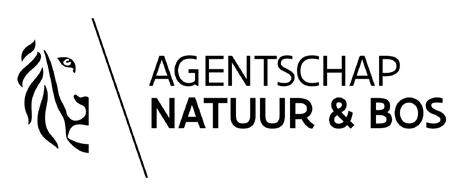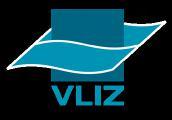INSPIRATION FOR YOUR CONFERENCE
ABOUT NATURE IN FLANDERS
FROM FASCINATING STORY TO PERMANENT LEGACY


INSPIRATION FOR YOUR CONFERENCE
ABOUT NATURE IN FLANDERS
FROM FASCINATING STORY TO PERMANENT LEGACY

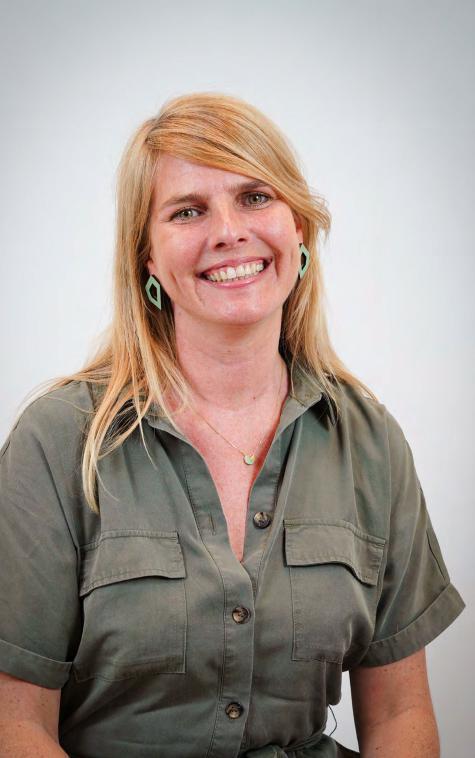
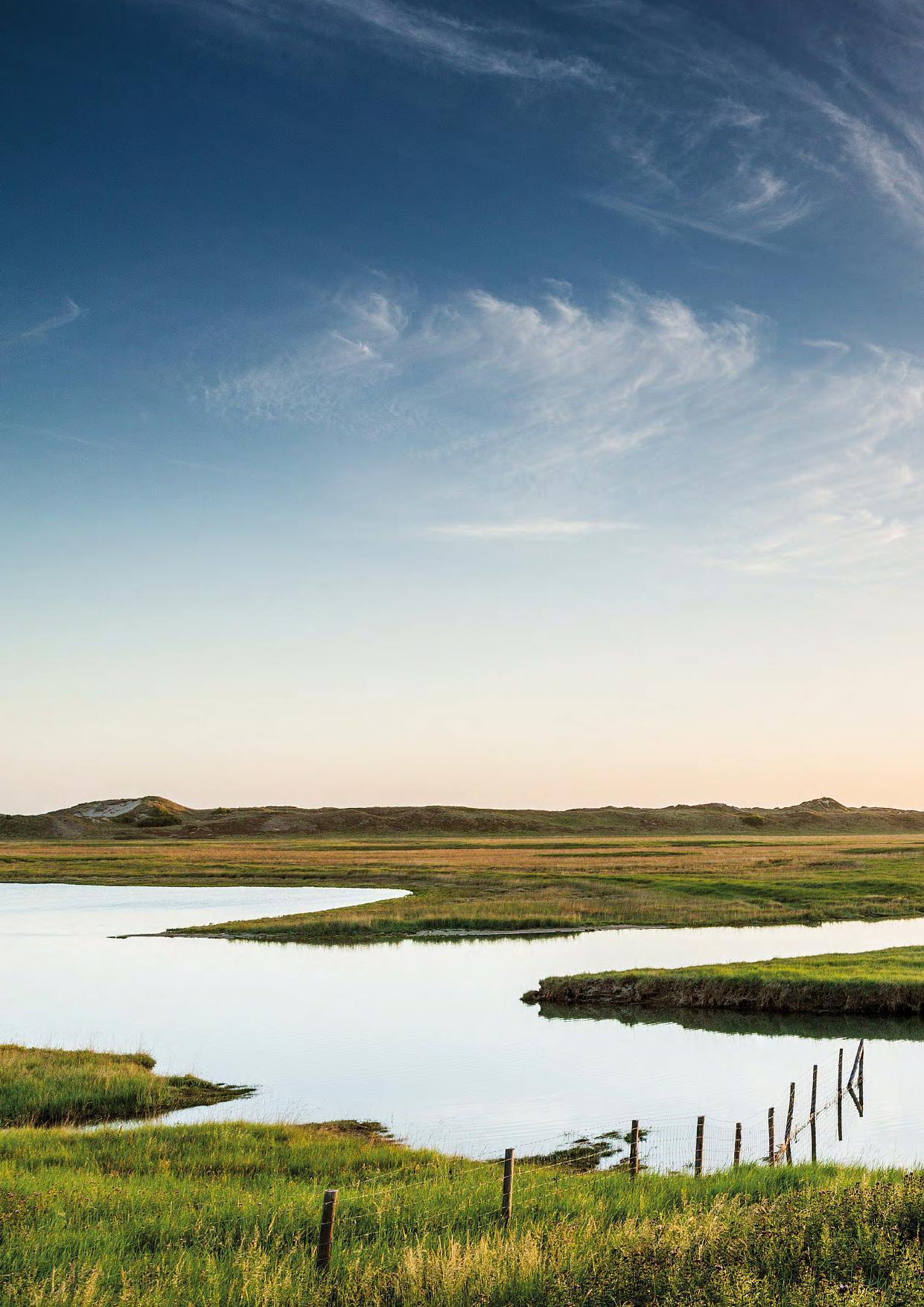
One of the most famous poets in Flanders is Guido Gezelle (1830-1899). More than 150 streets, lanes and squares are named after him, all the way to Amsterdam.

The favourite theme of this artist in words? The nature in Flanders. Gezelle wrote hundreds of poems in which he sang the praises of grass, trees, plants and animals. Some masterworks even carry an explicit ecological message.

It is no surprise that the nature is such a rich source of inspiration in Flanders. The northern region of Belgium is blessed with a great wealth and variety. For example, did you know that...
…Flanders is crucial for biodiversity in Europe?
…this region is one of the most vulnerable areas in the world when it comes to climate change?
…a film about our nature in the cinemas rivalled “Avatar”?
...from some venues, your delegates can take a stroll directly in a nature reserve?
...there are forests here that are designated as UNESCO world heritage sites?
Flanders is a unique biotope with valuable nature and varied landscapes, formed together with the residents and interspersed with special stories. This makes our region an exceptional location for your conference about nature. Here, you give an innovative interpretation to your conference theme
and make your edition a guaranteed success. And talking about success. At VISITFLANDERS Convention Bureau, we also attach great importance to the legacy of your conference. Our experts double down to help ensure that you create a lasting positive impact for society. To this end, we have even developed a complete methodology, which we offer to you free of charge as an additional service.
In this way, we want to show you how warmly Flanders welcomes your association or PCO. We roll out the red – excuse me: the green – carpet for you and your delegates in every possible way. Our venues are surrounded by greenery. Our cities full of art and heritage are just a stone's throw away from special nature reserves, national parks and landscape parks. Our complete ecosystem of companies, knowledge centres, decisiontakers and experts welcomes you with open arms.
Together with my colleagues at VISITFLANDERS Convention Bureau, I wish you much reading pleasure with this e-book. And I should now already like to welcome you to Flanders, to help shape the nature and landscape of the future with your conference. Or as our slogan says: come create tomorrow’s heritage.
Evelyn Bardyn Head of Convention BureauWhat interesting development about nature is takingplace right now? Why we have to become more “latte-proof” in the future? Why a national park is the best banking company in the world?
Ignace Schops provides the answers in this video. This internationally renowned expert received the Goldman Environmental Prize, also known as the green Nobel Prize, in 2018.


Ignace regularly exchanges views with icons such as Jane Goodall, Al Gore and Sir David Attenborough. On page 14, you can read an extensive interview with this expert on herpetology, biodiversity and landscape care.
The interview was recorded at an exceptional location: Thor Central, a venue as entrance gate to the Hoge Kempen National Park. If you choose this location for your conference, your delegates can take a stroll in the greenery during the breaks. On page 65, read more about this special conference location, situated in a former coal mine.
“A NATIONAL PARK IS THE BEST BANKING COMPANY IN THE WORLD”










You will read it several times in this e-book: the nature in Flanders offers a great variety. Nevertheless, one common thread runs through all these different landscapes. This is the so-called “Sandford Principle” - named after Lord Sandford, who introduced it in 1972 during a debate on environmental policy in the British Upper House. In short, it means that nature always takes precedence over economic activities such as tourism.
This “nature first” policy is particularly evident in forest management in Flanders. Indeed, important nature and forested areas cover the relatively limited surface area of Flanders, which possess a unique biodiversity: the Sonian Forest, the Meerdaalwoud Forest and the Hallerbos Forest (also see page 26). These ancient Flemish forests have great heritage value and there are countless historical stories that can be told about them. For example, the Sonian Forest has links with the House of Habsburg, with the defeat of Napoleon at Waterloo and with King William I of the United Netherlands.
The old Flemish forests have a great heritage value
A leading expert of forest management in Flanders - and of fascinating stories about the topic - is Patrick Huvenne. As regional manager for the “Agentschap voor Natuur & Bos” (Agency for Nature & Forest) of the Flemish Government, he is responsible for a number of large forests to the south of Brussels and Leuven.
“With nature and forest management, there is always tension between the ecological function of a nature area and its recreational and production function. For example, the Sonian Forest and the Meerdaalwoud Forest are urban forests, which provide wood as well as relaxation and space for the people of Brussels and Leuven. Forest management is thus always looking for a balance between these functions. Sometimes a piece of forest has to be cut down, but the “Nature First” principle takes precedence. We also invest a lot in direct enhancement of nature. So we are creating new ecoducts that animals can use to safely cross over busy roads. And we are trying to steer recreation: the core of the UNESCO zone in the Sonian Forest, where nature is most vulnerable, is now less accessible to visitors by removing parking lots."
The UNESCO zone, indeed. The Sonian Forest has partially been recognised as a UNESCO World Heritage Site since 2017. It is part of the Ancient and prehistoric beech forests of the Carpathians and other regions of Europe, a serial world heritage site that includes special beech forests in various European countries. Patrick Huvenne:
“The Sonian Forest is the only domain in our country that has received the recognition as natural World Heritage Site. This indicates its value and unique importance. We play a part at the top level, with a rich variety of rare species and populations. This biodiversity underground is also large - just think of fungi and mushrooms or insects.”
Climate change and the destruction of biotopes by construction and agriculture are putting a strain on biodiversity. According to Patrick Huvenne, this threatens to change the image of the forest.
“According to some studies, the loss of life forms is even a greater crisis than climate change. In any event, we are looking for solutions at all levels and for a good approach to the challenges that are coming our way. To this end, we maintain close contact with both local stakeholders and fellow experts from all over Europe. Thanks to the UNESCO recognition of the Sonian Forest and the international tourism in, for example, the

“Forest management is always a balance between ecology, recreation and production”© Envato
Hallerbos Forest, we also play a role in European projects. And through the Institute for Nature and Forest Research (INBO), we monitor developments at European level via research programmes.”

Networks and participation are two central concepts in Flemish forest management, says Patrick Huvenne.
“Flanders is a densely populated area and the landscape is used intensively. Consultation with all users of the nature and forest areas is therefore very important. We do this in order to create greater support and to explain why we sometimes choose a certain manner of forest management. It is not always easy to manage the tensions between all these groups, but consultation is crucial.”
Establishing partnerships and collaborations can be of interest worldwide, especially in countries where nature has to make way for human activities.
“An important part of my time and effort goes on connecting people with each other and with nature. This is why, almost 20 years ago, we set up the "Plan Boommarter", a local nature management project around the Hallerbos Forest. The plan focuses on connecting natural habitats and creating ecological corridors through forest expansion, hedgerows and wooded borders. In this way, together we create a favourable habitat for the pine marten, a protected species that is
sensitive to habitat fragmentation. The plan also aims to make people aware of the landscape in which they live and to give them an insight into its nature value. We are now trying to repeat that same idea, but bigger and better, on a landscape scale: the idea of interconnecting the Brabant Woods, while giving residents, farmers and businesses a sustainable future, in connection with the nature around them.
Despite all the challenges ahead, I am optimistic about the future. Among other things, thanks to the increasing awareness and joint action. By working together, we can make a difference.
I increasingly see strong human networks of involvement. I certainly noticed it during the process around the Brabantse Wouden. We were able to see how many people of all kinds want to get behind this idea: business leaders, district committees, municipal authorities, documentary makers, writers and hospital boards approached us spontaneously with the question of how they can contribute to this recognition. I am confident that they will also make valuable contributions in the years to come. For me, in this, there lies the hope of a turn that preserves our natural resources. Riches that residents, businesses, visitors and tourists can continue to enjoy.”
The values that Patrick Huvenne emphasises in this interview are also very important for a successful conference. In the same way as scientists, business leaders, governments and local residents gather behind a nature project, they also help to support your conference in Flanders. On the next page you can read more about this very strong support.
“An important part of my time goes on connecting people with each other and with nature”

Your conference about nature or landscape finds its natural biotope in Flanders. Government, science and business find each other in order to support your association or PCO. Moreover, you can also count on a great deal of sympathy from the general public, because our nature is a theme that is close to the hearts of the Flemish people.
The result is very strong support for the organisation of your conference within this domain. This support is further enhanced by the extensive service offered free of charge by VISITFLANDERS Convention Bureau.
For example, we are happy to help you find local partners who will also lend their support to your conference. The Legacy Makers – internationally renowned experts in many fields – do their bit to shape the positive impact of your conference on society. And you can also count on our help for an absorbing social programme, as you can read on the next page.
Gemmeke De Jongh, Nature expert at VISITFLANDERS Convention Bureau, is happy to tell you more about this unique service.
› meet interesting new partners
› create legacy with your conference
› get the technology needed for a hybrid conference
› organise a successful conference
› receive a tailor-made experience programme
› get support with your project proposal
› provide an inspirational visit for your decision-makers
GEMMEKE DE JONGH Nature Expert VISITFLANDERS Convention Bureau
gemmeke.dejongh@ meetinflanders.com
+32 2 504 03 78
GREAT SUGGESTIONS FOR YOUR SOCIAL PROGRAMME.
In Flanders, nature is always close by, including when it comes to your conference. So you can surprise your delegates with a social programme in the middle of all the greenery. On this page we provide some inspiration. Want to know more?
Gemmeke De Jongh is at your service. You can find her details on the previous page and at the end of this e-book.
Take your delegates on a cycling trip they will never forget: through the trees and through the water. TIME Magazine labelled this latter route as “one of the world’s 100 greatest places”. Fancy a first? Soon, even an underground bike ride will be possible.

A walk with your delegates? Not a problem, because many nature reserves are close to your conference location. You can even make the catering completely natural, with chefs cooking with what nature has to offer.



Another unforgettable nature experience, this time on the water: step with your delegates in the canoe of DOKano and sail together into Ghent's beautiful city centre. Along the way, you can scoop up any floating rubbish, thus doing your bit to reduce the plastic soup in the oceans. These sustainable boat trips are also possible in Mechelen, Leuven, Brussels and on the Meuse.


Wim Dries, Mayor of Genk

Conference: EUROPARC FEDERATION

Location: GENK
“Genk is the greenest central city in Flanders. Thus we have many conference locations where the link between man and nature can be felt. Just think of Bokrijk, C-mine or Thor Park. The link with heritage is also never far away in Genk.
For the organisation of Europarc 2012, the Hoge Kempen National Park was the inspiration. Limburg was also a logical choice. And with Genk, they opted for a green, centrally located city with many assets: beautiful heritage locations, entrance gates to the Hoge Kempen National Park and the Wijers and easily accessible by public transport. A city where you can immediately feel the connection with nature.”
 © The Looking Glass, LABIOMISTA, Genk (BE) © Koen Vanmechelen
Mien Quartier, Project Leader
© The Looking Glass, LABIOMISTA, Genk (BE) © Koen Vanmechelen
Mien Quartier, Project Leader
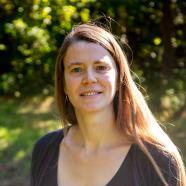
Social Innovation Stiemer Valley
Conference: CONNECTING NATURE SUMMIT

Location: THOR CENTRAL, GENK
“The presence of nature offers the city significant benefits in adapting to the climate change. Greenery can provide cooling, buffering of water, more biodiversity, more happiness, a safer feeling.
This is why the Connecting Nature research project is so interesting for Genk. 30 partners – including cities, academics and entrepreneurs – working together to explore how nature can be used as a solution to urban challenges.
The “Connecting Nature Impact Summit 2022” was therefore perfectly in its place in Genk. Five years of research and innovation around Nature Based Solutions were presented there. The project resulted in the implementation of large-scale projects in 10 European cities and in a global capacity-building programme.”



When you want to know more about nature, you can turn to no greater name than the Fleming Ignace Schops. His credentials in the field are impressive. He is an internationally renowned expert on herpetology, biodiversity and landscape care. From 2014 to 2021, Ignace was president of EUROPARC Federation, the largest network for nature in Europe. He is also a fellow and full member of the EU chapter of the Club of Rome.
In 2018, Schops received the Goldman Environmental Prize, also known as the green Nobel Prize, for his role in establishing the Hoge Kempen National Park – Flanders’ first national park. The success of his work is based on the (Re)connection Model, which aims to (re) connect nature and society. In 2017, Ignace Schops was named as one of the 25 most influential Belgians in the world by Charlie Magazine.

What makes nature in Flanders so special? It is the large variation, according to Ignace Schops.
“The Flemish nature reserves are indeed very diverse diverse because the Flemish landscapes are very different. In a relatively small area, you can find sandy, loamy and maritime nature. This is ideal for a great deal of biodiversity, which makes us very important in Europe. For example, Flanders is responsible for protecting the Atlantic heather and the white-faced darter, which have found their place with us.”
Although the nature in Flanders is fragmented – after Malta, Flanders is the most fragmented region in Europe – there are still many beautiful nature reserves and national parks here. What is more, your delegates can enjoy them close to the conference location.
The elephant in the room: economic benefits. Ignace Schops developed a model that focuses on the connection between people and nature, between business and nature and between policy and practice.
outlawed. We must once again protect nature – in all its forms – starting with our own flowerpots and back gardens.
“Just think of the Hoge Kempen National Park, for example, with some 12,000 hectares of nature and forest. Or the Meuse Valley River Park, the Border Park Kempen~Broek and the Kalmthout Heath. International conference visitors can enjoy unique natural experiences outside of the traditional conference halls in these areas. This is an important asset that Flanders has: wherever you are, nature is always nearby.
Yet it is important to realise that nature is not something we can take for granted. And that we have to take care of it. The corona pandemic taught us to rediscover the healing effect of nature. We had completely lost the connection with it. We need to reconnect and that is why investing in nature conservation is an absolute necessity. In the long term, it also yields many economic benefits.”
“Nature should not be locked up in reserves, but be accessible to all. And then I'm not just talking about the large nature areas. Nature is also the flower pot on a terrace. But in order to strengthen the connection with nature, we must also involve children and young people in its conservation and the appreciation of it. We really need to give them a voice, listen to them. Sustainability and respect for nature starts at school. And then not limited to the four walls of the classroom. No, it is important that children experience nature. That we ask them how they want to be involved.
The cycle network of Regional Landscape Kempen and Maasland is a fine example of reconnecting people and nature in a contemporary and accessible way. The blue signs display the cycle nodes and take cyclists on an incredibly beautiful journey through heathlands and vast pine forests. The highlight is undoubtedly the wooden cycle bridge on the “Cycling through
Analyses from 1820 until the present day show that the designation of nature areas has grown exponentially in Europe, but that the general biodiversity within them has declined. That is because we delineated them so strictly. We imprisoned them. What lies beyond, we declared
the Heath” route, from which you have a magnificent view of the wider surroundings.
With these cycle tourists also come the economic gain: the many B&Bs, restaurants and cafes that have found a place along the routes. You see: investing in nature pays off. On many levels.”

“Wherever you are in Flanders, nature is always nearby.”
“Nature is also the flower pot on a terrace.”
“Investing in nature pays off. On many levels.”
such as IUCN, UNESCO and the European objectives in its own very particular way, says the expert.
DAMME Research leader UAntwerpen SYLVIEThe government also plays a crucial role in nature management in Flanders, with the recognition of landscape parks and national parks. These protected areas serve as an engine for regional development, among other things in terms of employment, tourist recreational development and diverse investments. Furthermore, the intention is that the parks put themselves on the international map as an attractive destination for experiencing nature, landscape and heritage.

Someone who knows her way around the approach to Flemish parks is Sylvie Van Damme. By setting up the landscape parks and national parks, Flanders is providing content for the international frameworks
“Characteristic of the approach in Flanders is that our landscape parks and national parks are supported by a coalition consisting of the relevant regional and local stakeholders, who are representative for the area. In order to set the objectives, a dialogue has been entered into with the residents and users of the area. The central thrust in all this therefore lies in cooperation and dialogue, with a view to producing concrete actions in the field.”

VAN
THE FLEMISH PARKS: A UNIQUE APPROACH, A UNIQUE BIOTOPE FOR YOUR CONFERENCE.
“The park serves as an engine for regional development.”© Peter Baas
This approach is unique. Yet there are also other facets that make Flanders so interesting, says Sylvie Van Damme. This makes the northern half of Belgium a unique biotope, in which your association can give a very innovative interpretation to its conference.

“The diversity of fascinating landscapes in Flanders is particularly great. Those who wish to, can easily discover different landscapes with very distinct identities within a single day. This diversity has much to do with the large differences in terms of natural systems, such as geology, soil or water.
Furthermore, all the landscapes are also strongly influenced by centuries of human use. This intense but often very subtle interaction between man and nature leads to landscapes whose stories read like a book. By reading, understanding and living through the chapters about the past, we learn how to write new chapters today
and in the future. Methodologies such as landscape biography or landscape characterisation identify characteristics, bottlenecks and opportunities. They bring all the building
blocks into place in order to develop a landscape in such a way that its essential characteristics are taken into account while, at the same time, being able to respond to all kinds of social developments and challenges. In this way, we work together to create landscapes that are sustainable and attractive to residents and visitors.”
Sylvie Van Damme is a geographer and spatial planner with a doctorate in spatial planning and urban development. Her research focuses on ecosystems and their services, landscape analysis and design. She likes to build a bridge between theoretical concepts and their implementation in policy, management, planning and design. Today she is research leader of the InnoFiNS project on alternative funding for nature-based solutions. Sylvie regularly advises municipal authorities, provinces or Flemish authorities and design agencies. Among other things, she chairs the provincial committee for spatial planning of East Flanders, is a member of the board of directors of the Flemish Land Agency and chairs the jury for landscape parks in Flanders.
“The interaction between man and nature leads to landscapes whose stories read like a book."

Flanders currently has one National Park. A maximum of three more names will be added by the end of 2023. In these pages we introduce you to the candidates plus the already existing National Park Hoge Kempen.

To qualify as a National Park, the area must have an international appeal, an exceptional nature and a unique amenity value, which are an asset in terms of recreation and tourism. The areas must be sufficiently large and robust, so that their exceptional nature and biodiversity can be protected and developed in a sustainable way.

In the 12,000 hectares of natural beauty of the Hoge Kempen National Park there are many rare and special animals. Read more on page 22.
With its enormous diversity, the Border Park Kalmthout Heath is of considerable ecological and cultural-historical value. Read more on page 24.

The Brabantse Wouden comprise the most beautiful and oldest forests in Flanders. The forests are famous for their floral splendour in the spring. Read more on page 26.

ANTWERP BRUSSELS
2 3
6
5 1
In Bosland, your delegates can cycle through the trees. It is logical that the nature reserve positions itself as a “forest of adventure”.

Scheldt Valley is the collective name for the natural reserves situated along the banks of three rivers: the Scheldt and its tributaries the Dender and the Rupel.


4
HASSELT
The name “Taxandria” comes from the Ancient Romans who settled here 2,000 years ago. The park includes an extensive area of fens.

The Hoge Kempen National Park contains more than 12,000 hectares of natural beauty. Vast pine forests are interspersed with purpleflowering heather and shifting dunes, large lakes that testify to gravel and sand extraction, and high peaks that offer great views. This natural setting is home to many rare and special animals. The park also has 440 kilometres and hiking paths, an extensive cycle network, 200 kilometres of unpaved trails for mountain bikers and a bridle path network for horse lovers.

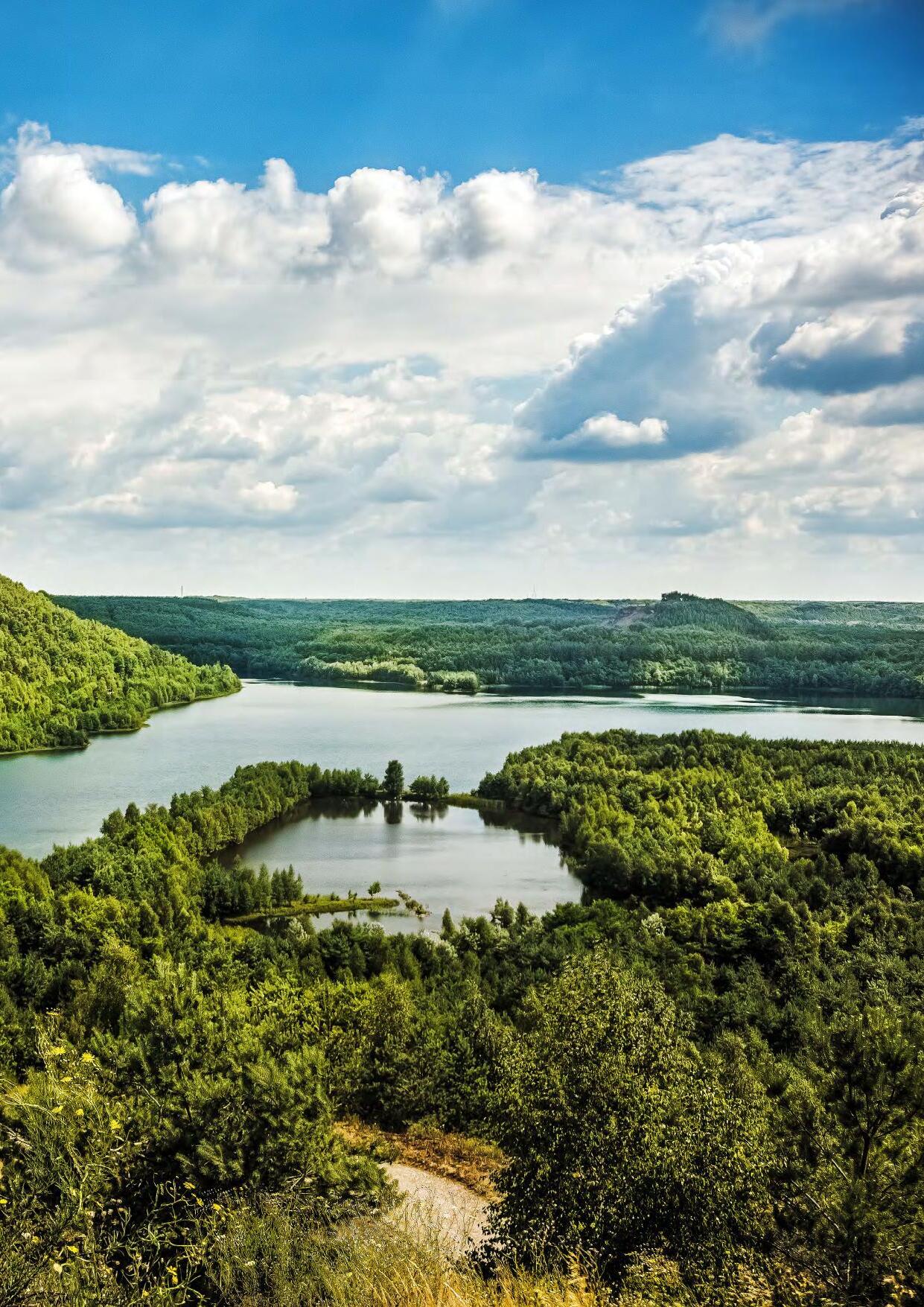 © Peter Baas
© Peter Baas
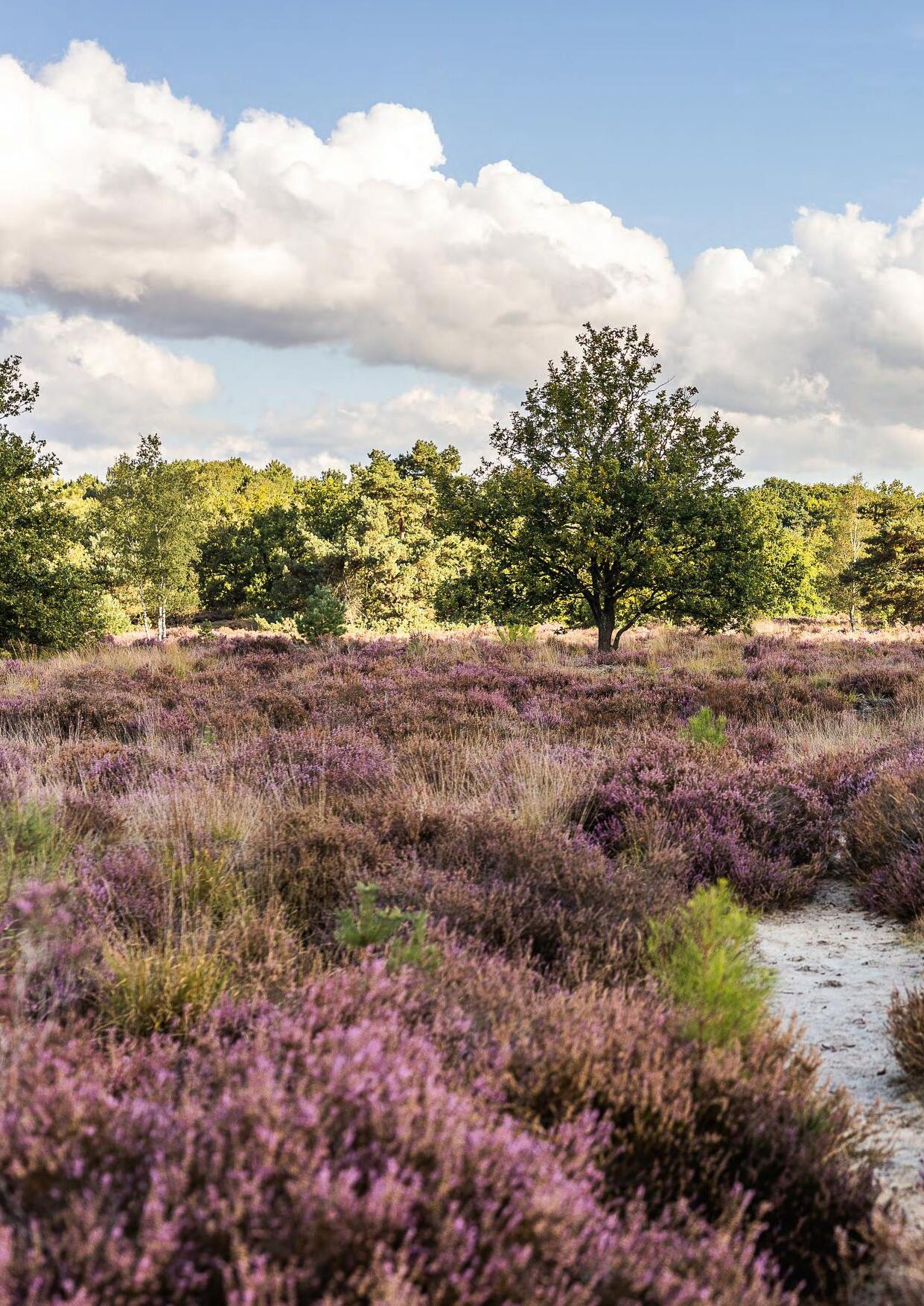
The Border Park Kalmthout Heath is situated on both sides of the Belgian-Dutch border and covers some 60 square kilometres. The enormous diversity in the landscape means that this piece of nature is of considerable ecological and cultural-historical value. Here vast, unspoilt landscapes of heather, fens, dunes, forests, meadows and polder alternate with each other. Visitors can literally and figuratively catch their breath on foot, by bike or on horseback.
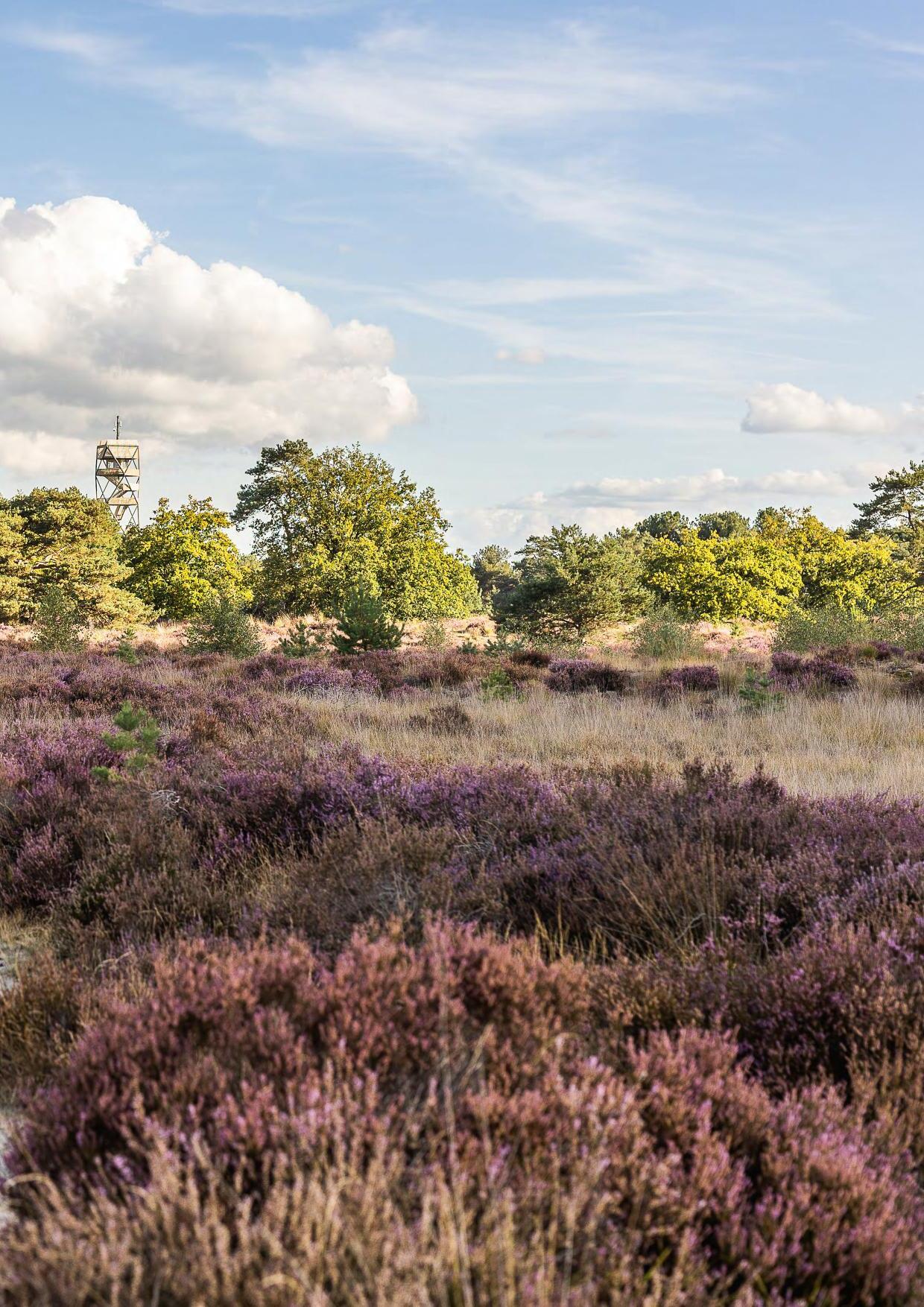
The Brabantse Wouden are formed by the most beautiful and oldest forests in Flanders: the Hallerbos Forest, the Sonian Forest and the Meerdaalwoud Forest. The natural meanders of the rivers Dijle, Laan and IJse provide a climate-resilient landscape full of living nature. The forests are famous far over the border for their flowers - such as the wood anemone, the wild hyacinth and the oxlip - which provide a magnificent spectacle of colour in the spring.



Like the national parks, the landscape parks are large areas with an international appeal. Here the emphasis is more on landscape quality and multi-functionality. In these areas, the long-term interaction between man and nature led to a specific landscape with important ecological, abiotic, biotic, cultural or landscape values. Efforts are being made to harmonise the integration of landscape development, recreation, nature, agriculture, heritage, housing, activity and tourism.
BRUGES
GHENT
At the end of 2023, the Flemish Government will also be taking a decision regarding the landscape parks. Three natural reserves will then be awarded the official title. The following pages introduce you to the seven candidates. 3 4 7
ANTWERP
BRUSSELS
LEUVEN
5 » « 4 »
« 6 »
The varied landscape of the Meuse Valley River Park encompasses 2 countries, 2 provinces, 11 municipalities and 1 river: the Meuse. Read more on page 30.
The hilly landscape of Haspengouw turns into a spectacular sea of blossoms every spring. Read more on page 32.

The Zwin Nature Park is considered to be an “international airport for birds”. Read more on page 34.
The hilly landscape of the Flemish Ardennes contains a rich array of varied biotopes. Read more on page 36.


This hilly landscape is a patchwork of hedged meadows and fields, old forests, sunken lanes, tall orchards and heritage such as castles and timber-framed houses.
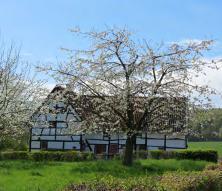
Water is the common thread that runs through this mosaic of marshes, brook valleys, fens, forests, heathland, meadow lands, pastures, fields and large-scale agricultural areas.


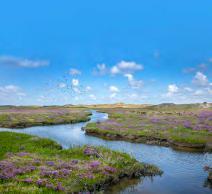

The Meuse Valley River Park is a cross-border nature reserve with the Meuse and its winter bed at its core. The varied landscape includes a tangle of old river creeks, riverbanks, fairways and gravel banks which characterise its slogan – “wild river nature in the heart of both Limburgs”. Its management involves 2 countries, 2 provinces, 11 municipalities, 2 water managers, 4 nature managers and 3 tourism organisations.

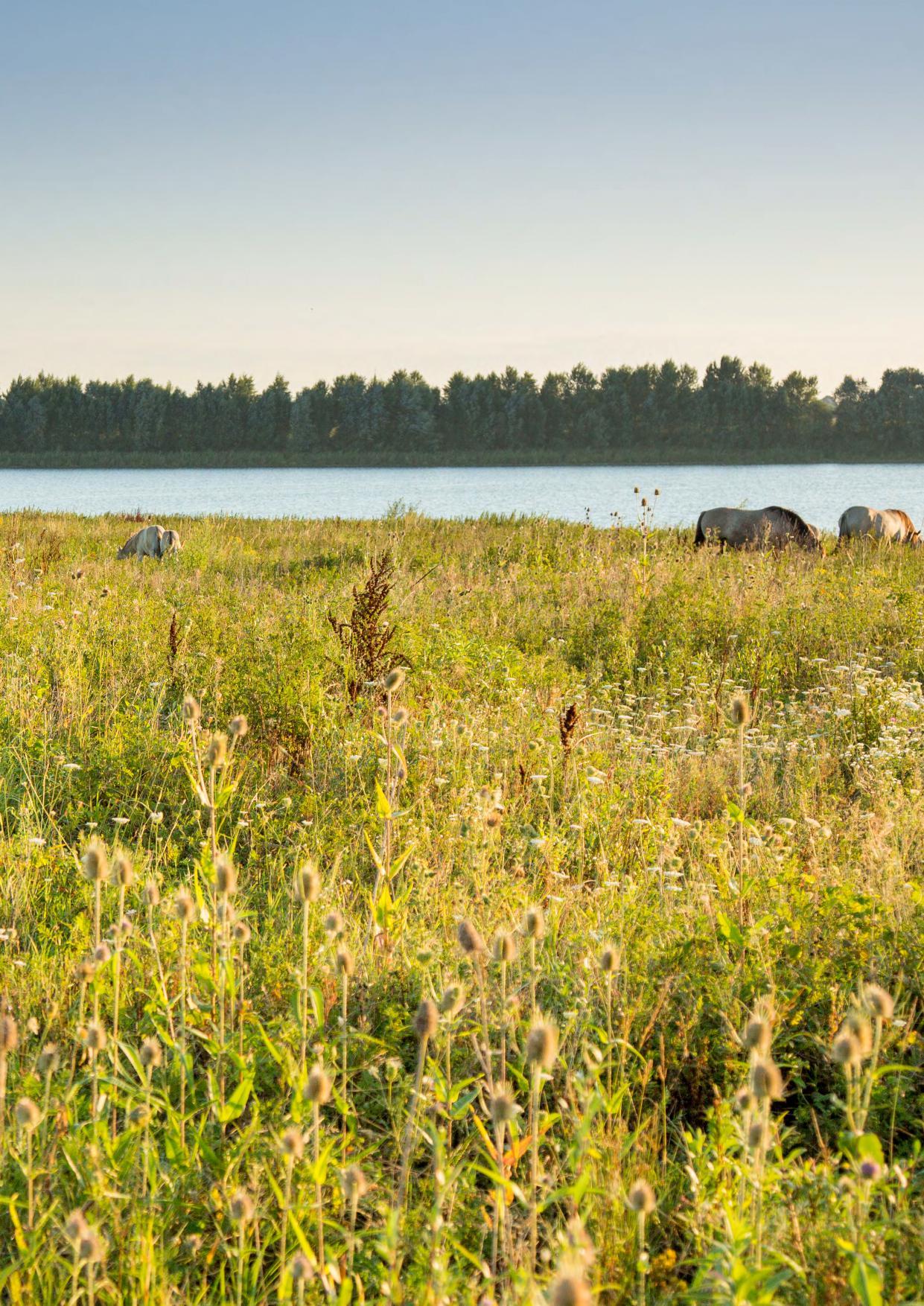
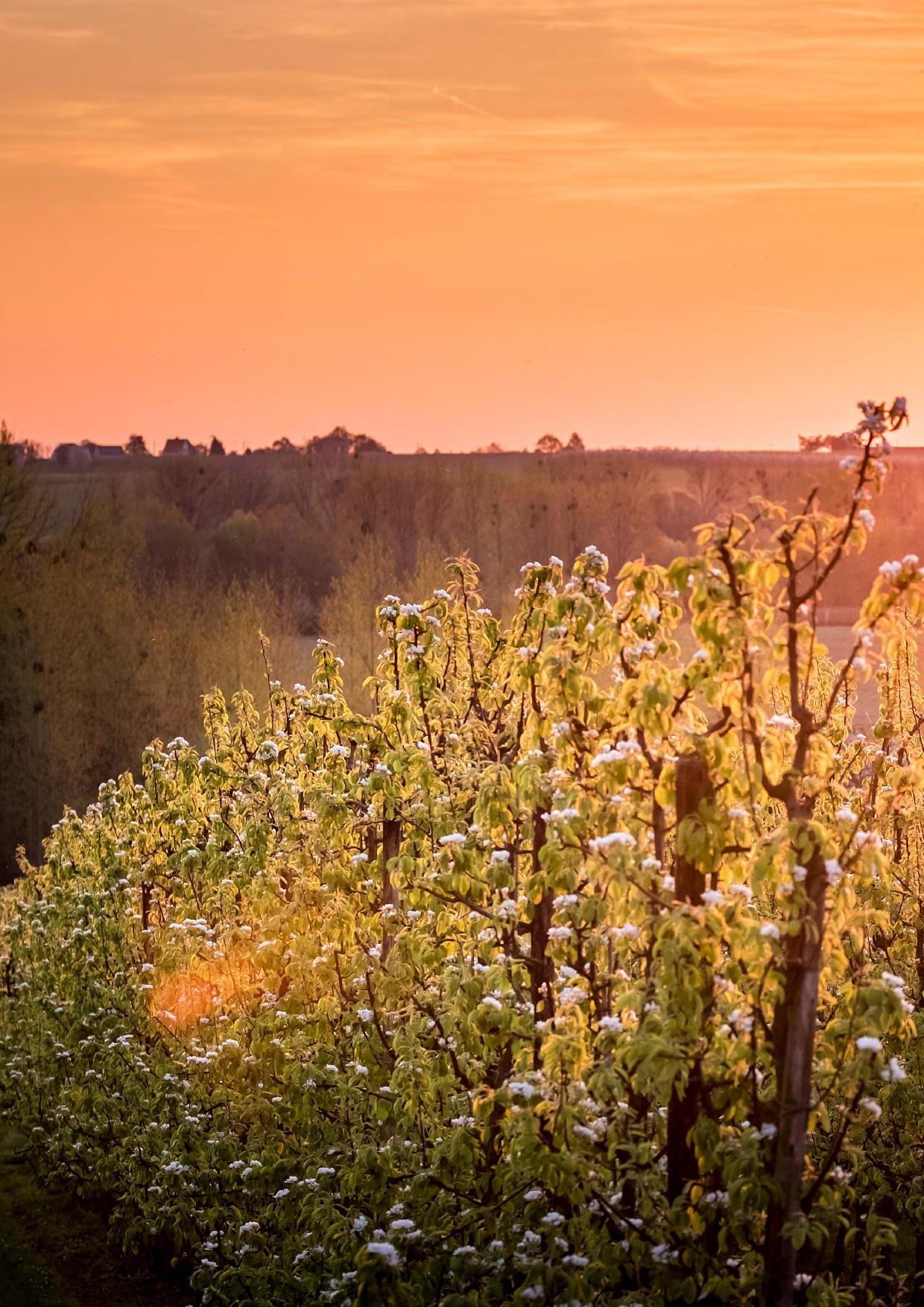
The hilly landscape of Heart of Haspengouw is widely known for fruit growing and viniculture. Every April, these fruit trees turn into a giant sea of blossom. This colourful spectacle attracts crowds of visitors every year, who enjoy unforgettable bike rides and walks.

The Zwin region is directly connected to the sea, which means that the nature reserve beats to the rhythm of the tides. Thanks to the daily influence of the salty sea water, the plain possesses an extraordinary flora and fauna. In the soil, there are thousands of worms, snails and bivalves - food for a colourful collection of birds. Biologists consider the Zwin Nature Park to be a true “international airport for birds”.

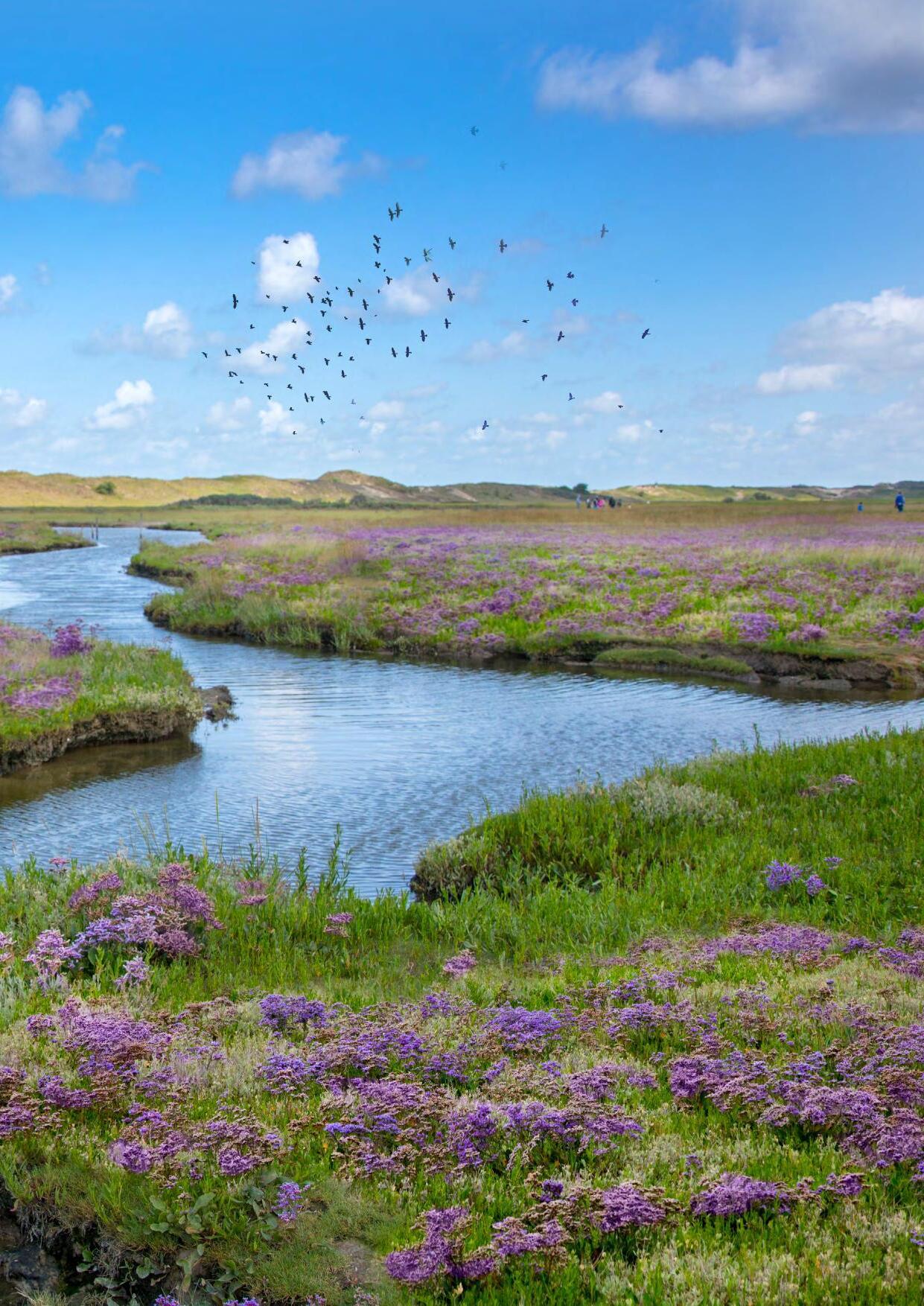

The Flemish Ardennes came about as a result of a long geological process, which created a hilly and undulating landscape with a range of biotopes: stream ecosystems with spring woods and carrs, “witness hills” with oak-birch woods and oak-beech woods, open fields and river valleys. The smaller landscape elements, with native trees and shrubs, are of great importance for the animals present there.


This is demonstrated, among other things, by the “Connecting Nature Impact Summit” in Genk, about which you can read more on page 13. The research and innovation around Nature Based Solutions resulted in the implementation of large-scale projects in 10 European cities, and in a global capacity building programme.
Your conference in nature can also create a unique legacy. The importance of the positive changes that you set in motion with your conference can hardly be overestimated. That is why Flanders is happy to help build the legacy of your association.
We do this by providing a unique service in which VISITFLANDERS Convention Bureau works together with you to define and develop the legacy of your conference. In doing so, we also call on the expertise of the Legacy Makers: renowned scientists, entrepreneurs and policymakers from Flanders, who are happy to share their insights with you.
This legacy service is provided based on a specially developed methodology that consists of four phases:
Phase 1: what sustainable impact do you want to achieve with your conference?
Phase 2: which parties within government, education, business and residents can help support your conference and your legacy?
Phase 3:
how do you tell the story of your conference and the impact you want to create?
Phase 4:
what parameters show that your conference achieves its sustainability goals?
Would you like to know more about this service which VISITFLANDERS Convention Bureau offers for free to your association or PCO? Legacy Expert Gemmeke De Jongh will be happy to give you all the details.
In order to help define a strong legacy for your conference, you get the support of VISITFLANDERS Convention Bureau and the Legacy Makers.


CONFERENCES IN OTHER FIELDS CAN ALSO CREATE A LEGACY IN NATURE.

6, 14 and 15. These are the numbers of the Sustainable Development Goals that relate specifically to water. Water
thus plays a key role in the global pursuit of sustainability, and conferences can leave a meaningful legacy in this regard. According to expert Johanna Fischer, this does not have to be something exclusively for conferences in nature. Congresses in other fields can also set the topic of water on the agenda.
"Indeed, I advocate opening up the scope of conferences in other fields and bringing in sustainability themes such as water. The links are often easy to make: from construction to water use, or from clothing to water. We need to inform and

educate people about the value of, for example, wetlands and how the government works together with national and international organisations to manage and improve them. By informing about these valuable water areas, the government also wants to involve stakeholders in finding new funds.”

“I advocate opening up the scope of conferences and introducing sustainability themes.”
JOHANNA FISCHER
Experte destination marketing
“These funds are important for collecting data about the added value of wetlands. For example, it is known that these areas can play a major role in CO2 compensation. But to find out how much carbon dioxide the wetlands store, and for how long, requires additional scientific research. Based on the data from the research, the right political decisions can then be made.”
This process can be accelerated by creating greater awareness, for example by introducing delegates of international conferences to wetlands such as the Zwin in Flanders (see also page 34).
“The Zwin is a so-called Ramsar area. In 1971, 171 countries
signed the Ramsar Convention, committing themselves to the conservation and sustainable use of wetlands. These are natural areas with an important biodiversity or a unique ecosystem, water purification or flood management. There are already more than 2,400 Ramsar areas worldwide, with a total surface area of more than 2.2 million square kilometres.
already being organised in this respect: beach and river cleanups, competitions to promote the sustainable use of water, attention to water use at events and in the keynote speeches at conferences. But it can always be better. And quicker.”
The wetlands of the Zwin are a fine example of an integral water policy. Starting at page 52, you can read about more examples of how Flanders is tackling this.
Another way to raise awareness about the importance of wetlands is to offer tourist experiences. Education and experience are two important elements. A great deal is
Johanna Fischer is an expert in destination marketing. In her work, she focuses on how tourist destinations can be linked to educational aims and sustainability. With her organisations – FrauBlau and tmf dialogue – Johanna has been specialising in the issues around water and other SDGs for many years: shortages of drinking water, but also ways in which certain regions promote soil filtration and give space back to the rivers. Thanks to the SDGs, more and more organisations understand how important water is and that we have to handle it differently. In order to realise this change, awareness needs to be increased and the support of governments won, even across national borders.
“Tourist experiences can also raise awareness about the importance of wetlands.”
This quote from Cicero opens the fascinating walking diary published by VISITFLANDERS. It is a golden guide for all those who want to take a walk through the greenery of Flanders. Nature lovers, of course, but why not your delegates as well? Surprise them, in the context of your conference on nature, with a walk in the greenery.
This is easy to organise, because there is always somewhere where you can walk close to your conference location. The walking diary offers you a mass of inspiration in this regard. The walks are divided into different themes:
• Bird paradises. The Zwin nature park is an international airport for migratory birds.
• Sandy Flanders. In Lommel there is even a nature park called “the Sahara”.

• The heather in Flanders. At the end of summer, this unique vegetation turns beautifully purple.
• Fruity Flanders. Pears, apples, strawberries, cherries and grapes all grow here.
Hilly Flanders. Spoil tips, so-called “witness hills” and tumuli – every hump in flat Flanders tells a fascinating story.
• Woods in Flanders. One of them – the Sonian Forest – is a UNESCO World Heritage Site.
• Flower power. "In Flanders fields the poppies blow" - so begins John McCrae's famous poem. But much more blooms in the fields of Flanders…
• Wet Flanders. Our region is part of the "Low Countries" for a reason. Water shaped our history yesterday, our nature today.
Would you like to receive your free copy of this fun walking diary? Then send an e-mail to the Nature Expert of VISITFLANDERS Convention Bureau, Gemmeke De Jongh: gemmeke.dejongh@meetinflanders.com



“THERE ARE NO FEWER THAN 27 INTERNATIONAL GR WALKING ROUTES THROUGH FLANDERS”
Is Flanders a country for walking in? Nobody knows that better than hiker and blogger Dorien Draps. She wants to get more people walking. She organises entire courses and a start-tohike teaching package with the “Op Wandel Academy”. According to this expert, it is precisely the nature that makes Flanders the walking paradise par excellence.

“In Flanders there are beautiful natural areas full of signposted walking routes. There are no fewer than 27 GR routes – Long Route paths - located throughout our region that often cross national borders. That means lots of beauty to discover. My favourites? It is hard to name them all, but I'm a fan of all the routes through the Hoge Kempen National Park
in Limburg. You can also take beautiful walks by the coast.
Flanders has so much beauty to offer. Often a walking route leads you through a village centre. There you find yourself back in the inhabited world for a while and you will come across cultural gems and unique heritage.”
“Walking is becoming more popular every year, even among young people. I see it as a kind of revival. Compare it to the art movement of Romanticism, which harked back to emotion, imagination and intuition. Nature played a prominent role in many works of art at the time. Artists went in search of more connection with nature. And walking, that is connecting anyway: with yourself, with others, with nature. I have the best conversations while walking. The masks fall offyou don't have to assume a role - and the cadence of your steps has a meditative effect.
That perhaps also explains the success of walking
meetings. People unwind when they are out in nature. Greenery stimulates our creativity and brain activity – something ideal for a walking workshop. For difficult conversations, it also ensures that the interlocutors can chat in a more equal manner. Other than at a long table and with constant eye contact.
By walking for just ten minutes per day, you already experience the healing effects. Walking is not competitive and does not always have to take a long time. Such a short moment is also very easy to build into your day: park your car a little further away, walk to the bakery or make your phone calls outside. And what could be finer than taking a breath of fresh air after a long day at the office in one of the beautiful parks or nature reserves that are always nearby in Flanders?”

Conduct difficult conversations while walking, so that interlocutors can talk to each other in an equal manner.

You have read it elsewhere in this e-book: nature is never far away in Flanders. Just a few minutes from your conference location, your delegates can find greenery to their heart's content. The same also applies for art and heritage in Flanders. So enrich your conference on nature with a dash of Flemish masters, for example by including a museum visit in your social programme. Want to bet that your delegates will appreciate the outing?
Indeed, the link between Flemish nature and Flemish painters has deep historical roots. Van Eyck, Rubens and Bruegel were only too happy to be inspired by the greenery around them.
THE MEUSE VALLEY INSPIRED HUBERT (CA. 1366-1426) AND JAN VAN EYCK (CA. 1390-1441)


The Eyck brothers are best known for the Adoration of the Mystic Lamb, the Ghent Altarpiece, which can be admired in Ghent. Their incredible eye for detail and their talent for reproducing all of this detail are unprecedented. For instance, in the background of the central panel, they painted over 75 species of flowers, plants and trees. If you look closely, you can recognise daisies, violets, clovers and lilies-of-the-valleys. Some plants – such as the solomon seal and the meadow rockfoil – can only be found in the Meuse Valley, where the brothers were born.
Read more about the nature of the Meuse Valley on page 30.
THE PAJOTTENLAND WAS THE FAVOURITE SETTING OF PIETER BRUEGEL (1525-1569)

The hilly Pajottenland has charmed many a hiker and cyclist. Bruegel also had a fondness for this idyllic region and incorporated many typical elements into his paintings. On the signposted Bruegel walk and Bruegel cycle route, you discover the universe of the painter. For example, you will pass the chapel of Sint-Anna-Pede in Itterbeek, which can be seen on the work “The Blind leading the Blind”. And the restored water mill of Sint-Gertrudis-Pede can be seen on “The Magpie on the Gallows”.
In the last years of his life, Rubens retreated to his country house in Elewijt. That building – then called “de Heerlijkheid Het Steen” – is now known as the Rubens Castle. The surroundings inspired the master to produce a series of beautiful landscape paintings. The best-known work is “A view of Het Steen in the Early Morning”. In it you can recognise the gently rolling landscape of the Zenne Valley. The little wooden bridge in the painting still exists, and the current castle also bears many similarities to Het Steen where Rubens spent his last days.
 THE ZENNE VALLEY WAS PUT ON CANVAS BY PETER PAUL RUBENS (1577-1640)
THE ZENNE VALLEY WAS PUT ON CANVAS BY PETER PAUL RUBENS (1577-1640)
©TheNationalGalleryLondon
©MuseoeRealBoscodiCapodimonte CC BY-NC-ND

An odd name popped up in cinemas in Flanders last autumn. Alongside such classics as “Avatar: The Way of Water" from James Cameron and "Triangle of Sadness" from Ruben Östlund, a nature documentary also brought a smile to the faces of the cinema owners. This film, “Onze Natuur”, shows in an amazing way how wild nature in Flanders still is in some places. Some scenes are already part of the collective memory, such as the close-up images of a hawk catching a rabbit and Egyptian goose chicks on the ice of a pond.
By the end of 2022, “Onze Natuur” had reached the quarter-million-viewers milestone. The film music from composer Dirk Brossé was nominated for the prestigious International Film Music Critics Awards. Also on the shortlist: indeed, “Avatar, The Way of Water”...


Protecting forests while at the same time brewing quality beer: Beer4Nature succeeds with verve. With their beers, Kevin, Jeroen and Pieter have twice won silver at the London Beer Competition.

An article about beer in a book about nature? in Flanders, that is a logical match. Beer here is a truly natural product, brewed with locally grown ingredients: malt, hops, yeast and herbs or fruit.
Of those ingredients, the hop stand outs the most. This spicy climbing plant gives the beer its typical bitter taste, as well as helping with the storage and the aroma. Most of the hops are grown around Poperinge in West Flanders. Hops can only be grown between latitudes 35 and 55, which is why some connoisseurs even speak of a ‘terroir’. Hop shoots are a delicacy and are picked during a short period in spring and served in local restaurants.
Some brewers in Flanders go one step further than just using natural products: they also give something back to nature. For example, microbrewery Beer4nature uses its profits to purchase areas of nature, manages them optimally and opens them to the general public. In this way, it contributes to biodiversity in Flanders.



Also something which makes it so interesting to organise your conference in Flanders: you can introduce your delegates to the Flemish beers. Admit it, that's the tastiest way to complement the "nature" theme, isn't it?

Flanders is historically part of the Low Countries, together with the Netherlands and the French-speaking part of Belgium. Because water always flows to the lowest point, you understand that rivers and the sea have always played an important role here. Water shaped the landscape and nature, and still does today. In this e-book, we dive a little deeper into the two largest rivers in Flanders: the Meuse and the Scheldt.


Project leader RivierPark
Maasvallei at Regional Landscape Kempen and Maasland


The Meuse has - by Flemish standards - a wild character. It only flows through the region for a short stretch, but in those 40 kilometres it nevertheless has a serious impact. On Flanders' drinking water supply, for instance. But the Meuse Valley is also considered a leading example of river restoration, which is looked up to internationally, says Katrien Schaerlaekens.
“The Meuse is important for Flanders because it supplies drinking water to almost the entire region, via the Albert Canal. But, ecologically, the river is especially important. There is no shipping on this route –and thus no economic engine controlling the river. That’s why river restoration started early here, whereby one-third
A third of the Meuse Valley River Park can be occupied by water.
of the 13,000 hectares of the Meuse Valley River Park can be occupied by water. Because the Meuse is a rain river, it can flood heavily when there is excessive rainfall. Thanks to the interventions in the River Park, the impact for residents remain limited, also upstream of the Meuse.”

and old gravel ponds, who were engaged in the Meuse system, the biodiversity around the river has increased considerably. In the last fifteen years, the surface area of the nature reserve has doubled and the diversity of plants has tripled, says the project leader.
“By giving the Meuse the space to occasionally overflows its banks, the river spreads seeds and fertile silt. In the natural areas, nothing is planted by humans. The vegetation is the result of natural processes.
The Meuse Valley River Park is a unique biotope where wild Konik horses and Galloway cattle roam freely and graze the area. Nature is allowed to take its course. Schaerlaekens:
“Koniks and Galloways are selfreliant. They require no care and know the area very well. If part of their territory floods, they will naturally look for higher ground.”
Thanks to the lowered banks
Europe aims to restore 25,000 kilometres of river by 2030. The initiative in the Meuse Valley was one of the very first in that sense. The pilot projects, which began in the early 2000s, attracted a great deal of international interest. From all over, engineers came to see how the Meuse Valley was taking shape. Even today, many countries are still keen to discover how things are developing by the Meuse. It is not only the approach, but also the scale of the project that is impressive and important.”
The delta of the river Scheldt is also a place where the work of nature is very visible. This beautiful valley, formed by tides, wind and man, includes the Scheldt itself and also the Western Scheldt, the Eastern Scheldt and the Scheldt-Rhine canal.
As a geological nursery, the Scheldt Delta is of great importance to science. Here, researchers study the processes of sedimentation and erosion, which allows them to interpret sediments of climate and sea level changes elsewhere on the Earth in mountainous and hilly areas.
Over the last fifteen years, the diversity of plants in the Meuse Valley has tripled.
The Scheldt delta is one of the most vulnerable areas for climate change in the world.
Mentioning the sea level: the region is low-lying, has a high population density and is home to a great deal of economic activity. This makes the Scheldt delta one of the most vulnerable areas for climate change in the world. The river region also offers many possibilities for tourism. The valley has dozens of nature reserves and cycle and walking routes.
Because of its unique character, five provinces in the Netherlands and Flanders applied for the status of “UNESCO Global Geopark” for the Scheldt delta. That would be a first, because no where in the world does a cross-border geopark exist. UNESCO is therefore viewing the dossier with great interest because the delta is situated in two countries and in an economically busy area. The UN organisation will make their decision in 2024.


Flanders is happy to roll out the red carpet for your conference. Whichever location you choose, you can always be assured of a unique experience for your delegates. From each Flemish conference city, it is but a stone’s throw to one or other of the pieces of nature that are so typical of this region. So let your delegates enjoy a unique combination: the culture of the place where your venue is located, on the one hand, and the greenery that drapes itself around it on the other.
In this e-book we would like to zoom in on three locations that are outstanding in your field: Ostend - situated on the North Sea - and Hasselt and Genk - nestled in Limburg, the green lung of Flanders. These cities are also happy to present to you their most beautiful venues, all of which belong to the network of the Flanders Heritage Venues: buildings with a unique story and exceptional architectural value, within walking distance of all of Flanders’ natural, cultural, artistic and culinary assets.
Would you like to learn more about this network of selected conference venues? Sam Versele, Meeting & Congress Infrastructure Expert at Visit Flanders, is at your service.

GIVE THE THEME OF YOUR CONFERENCE AN EXTRA DIMENSION IN THE FLANDERS HERITAGE VENUES.



Where better to organise a conference about nature than in the city by the sea? Ostend combines the best of both worlds: not only are the meeting and conference facilities very diverse, but with its seaside location Ostend equally offers the biggest natural asset.
The sea has the power to heal, but just as much to inspire. Just think of big names such as James Ensor and Marvin Gaye who found their inspiration in Ostend. With a conference in Ostend you will experience how the sea can be a source of inspiration. A successful congress will be guaranteed!


A beautiful venue for your conference in this city is Kursaal Ostend. Here you offer your delegates "The Art of Perspective". You welcome them in an exceptional heritage building with a view of the sea, surrounded by unique works of art. Through one door, you walk into the bustling Ostend while, through another, you step directly onto the beautiful sandy beach.
Capacity: up to 2,000 pax www.kursaaloostende.be/en
Want to recharge after a full day attending a congress? Nature always works wonders. Hasselt is one of the few capital cities in Belgium where you can find so much nature so close by.

Just a stone’s throw from Hasselt, Herkenrode Abbey is an extraordinary location and monumental piece of heritage in a green oasis of 100 hectares: this heritage site is a pearl of renovation and experience.
The largest authentic Japanese Garden in Europe? You’ll find it… in Hasselt. Listen to the waterfalls, be enchanted by the koi fish, and take a stroll across the many little bridges and winding paths. Experience Japanese culture to the fullest and become totally Zen.
Thanks to the transformation of the canal basin, Hasselt can call itself a ‘city by the water’. Feel like enjoying your takeaway in peace and quiet? Then settle down on one of the benches by the water.

Genk – just an hour’s drive from Brussels – is the greenest central city of Flanders. In the last century, the city has been transformed from a quiet heathland village via a mining community and car town into the forward-looking city it is today. The imposing mining heritage gives form to its unique skyline.
Did you know that, around the year 1900, landscape painters used to descend on Genk in order to set the heather and greenery on canvas? Genk is the greenest central city in Flanders and,
with Kattevennen and Thor Park, it has two entrance gates to the Hoge Kempen National Park, the largest national park in Flanders.
This unique mix of past and present and of architecture and nature will undoubtedly get the creative juices of your conference delegates flowing!


The former mine site of ZLDR Mine impresses your delegates with its imposing industrial halls, the intimate art deco-rooms and the exciting, creative catering. The historic buildings and machinery lend a unique industrial feel to your event. At the same time, ZLDR MINE is surrounded by nature, and your attendees can discover the vast green surroundings on foot or by bike.
Capacity: up to 2,500 pax www.witti.be/locaties/ schouwburg-zolder-mine/

Alden Biesen is an inspiring place that oozes history. Built in 1220 by the Teutonic Knights, the impressive castle became a focal point for Europe’s nobles and diplomats, and a true place “where epic stories begin”, as its slogan reads. This impressive heritage site can also be the starting point for your story, as conference attendees will be inspired by its sheer size, history and surrounding nature.
Capacity: up to 300 pax www.alden-biesen.be


This former coal mine is now a listed site, home to artists, educational institutions, creative businesses and a conference centre with 30 fully equipped meeting rooms - hence the slogan "Powerhouse of creativity".


On the central square, the old headframes still stand proud – landmarks that can be seen from far and wide.
A suggestion: invite your delegates to an adventurous experience tour in the old mining tunnels.
Capacity: up to 485 pax www.c-mine.be/en





Thor Central's slogan - "digging energy for the future" - was not chosen at random. Generations of miners have worked here, digging up millions of tons of coal. Today, the mining site has become an R&D hub for energy-driven technology and sustainable forms of power generation. Although Thor Central is a characterful industrial-type venue, you are surrounded by green – if the weather allows, you can even hold your meetings outside.
Capacity: up to 550 pax www.thorcentral.be/en
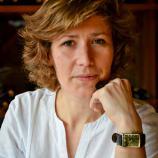
Flanders ( Belgium )
Wallonie ( Belgium )
RESPONSIBLE PUBLISHER
Peter De Wilde,
VISITFLANDERS
Grasmarkt 61, 1000 Brussels, Belgium
LEGAL DEPOT
D/2023/5635/12
CONTACT
info@meetinflanders.com
MORE INFORMATION
www.meetinflanders.com
COPYRIGHTS
VISITFLANDERS, iStock, Belga
All rights reserved. No part of this publication may be reproduced, stored in a database or retrieval system, or be published in any form or in any way (electronically, mechanically, by print, photoprint, microfilm or any other means) without prior written permission from the Publisher.





Discover some of the many partners from the ecosystem who, as potential Local Organising Committee (LOC) members, will help support your conference.





